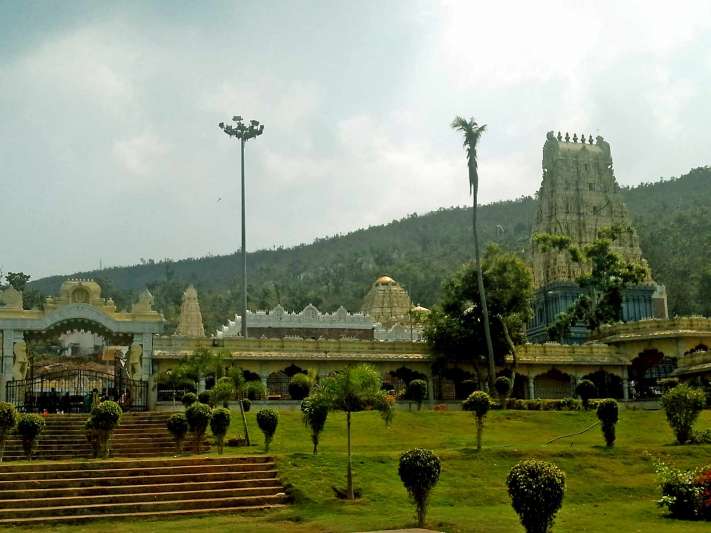An integrated project has been launched for the restoration of greenery to lessen the levels of pollution in the city and stabilise the groundwater table. The Srivarahalakshmi Narasimha Swamy Devasthanam has launched the Simhagiri Vanasamrakshana Yagnam, and plans have been made by the Simhachalam Devasthanam to take up a one lakh plantation programme by the end of December 2018.
The Simhachalam hills spread over a radius of 15 KMs have the potential to lessen carbon emissions by at least 10,000 tonnes per annum. They are one of the best sources of flora and fauna in the Eastern Ghats. The rapid urbanisation in the city has left the biodiversity damaged with exposed rock left on the hills. Several water springs along the hill have vanished with many on the verge of it.
Andhra University studied the environmental emergencies on the hill and provided the devasthanam with a master plan. It was found that 74 varieties of plants existed on the hill, out of which 34 were extinct. The devasthanam has been alerted and asked to take immediate measures if it wants to conserve the flora and fauna on these hills. 200 varieties of fauna were also found at the hill, but a huge number of flora and fauna has disappeared in the last three decades.
Hudhud in 2014 also let the Simhachalam hills severely damaged. The devasthanam has accepted the master plan and kickstarted the SVY project last year. During the 2016 monsoons, they planted 16,000 saplings. The devasthanam has also started its own nursery, and at present, 32,000 varieties of saplings are ready at the nursery for plantation. This year, they will be planting 20,000 saplings by the end of August/September.
Out of the 34 varieties lost, 30 have been recovered. 800 KGs of seeds have been covered with cow dung and the seedlings are expected to sprout during the monsoon rains. Arrangements are in place to plant one lakh saplings by the monsoon of 2018. Regarding the exposed rock, the devasthanam is adopting water seed management. Construction of trenches, circulation tanks and check damns have been taken up to conserve rain water.










Discussion about this post